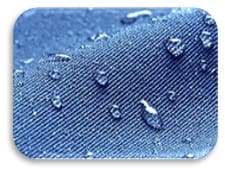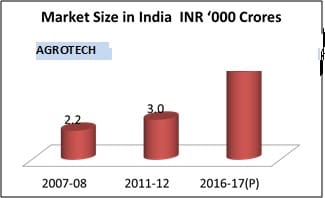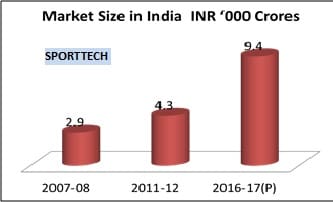Introduction
“Make in India” is one of the most appreciable initiatives taken by our respected PM “NarendraModi” to fuel growth of Indian manufacturing sector. Textile Industry is one of the core segments of Indian Manufacturing Industry contributing 14% of total industrial output & employing about 45 Million populations directly.Though Textile Industry has its huge contribution in terms of export earnings, industrial output & employment generation when it comes to investment initiatives, Indian entrepreneurs are turning back to the sector. So let’s analyze why most of Indian entrepreneurs are turning back towards the sector which has presence in country since ancient times.
If we look at the mindsets of most of the investors while investing, they are looking for higher profit margins, lower gestation period, sustainability, faster returns & easy returns of investments. Unlike all above, most of conventional textile businesses give lower profit margins & are very labour and capital intensive which is why most of the existing Textile players are looking for opportunities to diversify into other businesses.
The questions to all these investors may be
- Whether you have figured out all opportunities available in your own industry?
- Have you done enough research to find out which are upcoming market trends in Textile sector globally?
- What are current shifts of Indian Textile market & which are prospective Textile growth sectors?
- The answer is “No”
India has a strong history of Convectional Textiles. It is traditional industry where generations to generations are involved into same convectional business but today’s scenario is different. In spite of growing demands of domestic & international markets, convectional textile sector is highly saturated. It is facing challenges such as high competition levels, high inflation rates, less control over prices, labor intensively& overall decrease in profitability levels. So Textile entrepreneurs have no other alternative than diversifying into other business. But why can’t they think of “Technical Textiles” as potential investment sector which goes parallel to the conventional textile industry.
Technical Textiles – Opportunity for India
Unlike conventional textiles, Technical textile has huge potential in India, as the sector is in introductory phase. Indian Technical Textile Industry has witnessed significant growth of 16% from 2001 -02 to 2009-10 & is expected to grow at the rate of 20% year on year to reach market size $ 36 billion by 2016-17.
The income of Indian consumer is also growing very fast. This rise will enable them to make more discretionary spent on technical textile products viz. Hometech, Clothtech, Mobiltech, Sportech and Meditech. India’s per capita income is projected to soar by 10.4 per cent to Rs 74,920 in 2013-14 as the country becomes a $1.7 trillion economy( Source: Economics times)
The fast growing middle class of 300 million with higher discretionary income is expected to increase to 520 million in 5 years. The middle class is well educated and receptive to the many technical textile products particularly the disposable products which have huge market in western countries. This combined with the growth of organized retail in the country is a key growth driver for technical textiles used in consumer products.
Significantly over 50 % of the population is below 25 years – the vibrant segment for any market. Also India leads the world with highest confidence index (Confidence was highest in India for a 7th straight quarter) – showing optimism of consumers in economy. (Source: Neilsen Global Consumer Confidence Index for quarter 3 of 2011).
Their wide range of applications, lack of competition and growing consumer and industrial demands make it a big opportunity area and an attractive option to invest in. Add to this, the factors conducive for the growth of manufacturing and consumption of technical textiles are also available within the country. Though India is the 2nd largest textile economy in the world after China; its contribution in the global technical textile industry is only 9% to the total consumption.
Currently, we have very few market players in Technical Textile segment. Technical Textiles itself is a vast sector. Depending on the product characteristics, functional requirements and end-user applications the highly diversified range of technical textile products have been grouped into 12 categories.
As Technical Textile products are highly engineered products manufactured based on its functional properties for specific use, they are higher value products, so they fetch higher returns to manufacturers giving good profit margins. The Indian culture is showing paradigm shift towards westernization, so the new generation entrepreneurs should think of untapped market segments. As we are moving towards globalization, our needs and market demands are changing and I am sure the products like wet wipes, disposable home textiles, travel kits, air bags, high end sports textiles and disposable products like medical textiles will be products of daily consumption in near future.
If we go 10-20 years back, the products like sanitary pads, baby diapers or wipes, were hardly used by mass population. But today, these products are reached to rural parts of India. So time has come to change our mindset from “Conventional Textiles” to high value “Technical Textiles” as investment options. Investors need to direct themselves from basics to high engineered niche products.
Major chunk of Technical Textiles are manufactured by Non-woven technologies. These are compact technologies and give much higher production and are emerging technologies to produce complex products as well. As the process is very short, the utility consumption is much lower and due to huge production, the operating costs are minimal.
Moreover, there is hardly any involvement of human beings and hence quality is determined by technology and very less chance for human interference. In India only 12% of Technical Textiles products are manufactured by Nonwoven technology as compare to 24% of usage in the world. So India still has long way to go to meet global requirements of nonwovens.
Market Size in India
Source: Office of Textile Ministry &Suvin’s BOK
Positioning India
Time has come to position India as manufacturing hub for Technical Textiles (TT). In order to position us in global market, first we need to understand Technical Textiles thoroughly. We need to create awareness amongst each verticals of Textiles industry. Government is been taking initiatives to promote TT among the value chain, but efforts taken by government are not enough. So, first step into positioning India as TT hub is to carve out clear vision, strategy & action plan for TT. We need to map out existing TT demand & future growth rate in each of the 12 TT segments in domestic as well as global market. Once demand assessment is done; we need to analyze our current potentials in terms of raw materials, infrastructure, technology level & human resource. The demand-supply analysis will give us clear picture of enormous opportunities available in the TT segment & we can frame out our vision for Technical Textile segment. The assessment of additional raw material, infrastructure, technology level & skill development required to match the global & domestic demand & make India as leading global player.
Each & every state of India can be mapped out for type, quality & quantity of fibres produced & what is the % of fibre produced is directly exported. Based on this data, we can work out how much is the current potential to produce finished product instead of selling it as raw material. This value addition into TT will not only give higher returns but also fetch good profit margins to entrepreneurs.
Once we map out raw materials, we are ready to figure out additional investments required & level of infrastructure to be development. Hereafter role of government will be to introduce various schemes & policies favorable for the investment in TT sector. This will create conducive environment amongst the investors.e.g. Capital subsidies & interest subsidies to the investors into Technical Textile sector.
As Technical Textile is high engineered product, it requires high skilled labor trained with international skills and standards. It is necessary to check whether existing educational programs are capable to create such high skilled human resource. Educational seminars & training programs can help to create good human resources. In fact, there are international consulting firms who are specialists and have experience in training to textile experts as well as labors. Such kind of training programs can develop a good skilled workforce. Government can support such skill development programs & training centers for growth of TT segment.
Technology advancement plays crucial role for growth TT segment e.g. if our vision is to double market share in next 5 years, but we do not have state-of-the art technology to produce international standard goods, then we can never achieve our vision. In Technical Textiles, product specifications are very stringent. With the obsolete machineries, we cannot achieve desired norms & standards of products competitive to international standards. We have to update ourselves with the latest state-of-the are technology. Government has launched TUFS scheme to support technology development which is an appreciable initiative. However, it needs efficient implementation and promotion across the value chain. More such Government schemes are needed to bring about technology advancement.
Last but not the least is government policy framework. Government policies should be in tune with our vision. Various central & state government schemes can help to boost investment in TT sector. Benefits like tax exemption, tax holidays, and capital & interest subsidies should be given to promote TT sector. Subsidies on machineries of Technical Textiles will be helpful. Similar to Textile Park concept, Technical Textile Park can stimulate positive environment for the growth of TT sector.
Thus we can definitely position India as potential hub for Technical Textile provided, we develop world class infrastructure, technology level, skill development program & Government policy framework which will support our vision…
Let us reap profits …
And carve out better tomorrow!!!





















